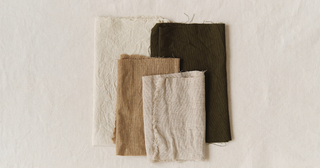Linen has been a popular choice of fabric for clothing for centuries. It is a natural fiber that is made from the flax plant. Linen has a distinctive texture and drape, making it ideal for a wide range of clothing items, from casual wear to formal attire. In this article, we will explore the advantages, disadvantages, and pitfalls of linen as an apparel material.
Advantages of Linen as an Apparel Material
Breathability

One of the primary advantages of linen is its breathability. It allows air to circulate freely through the fabric, which makes it ideal for warm weather. Linen can keep you cool and comfortable even in hot and humid conditions.
Durability
Linen is a strong and durable fabric. It is stronger than cotton and can withstand frequent washing and wear. With proper care, linen clothing can last for years.
Absorbency
Linen can absorb up to 20% of its weight in moisture before feeling damp. It means that it can wick away sweat and moisture from the skin, making it an excellent choice for summer clothing.
Environmentally friendly

Linen is a sustainable fabric as it is made from flax, which is a renewable resource. Flax requires less water and pesticides than other crops, making it an eco-friendly choice.
Versatility
Linen can be worn in a variety of styles and occasions. It can be dressed up or down, depending on the occasion, making it a versatile choice for any wardrobe.
Disadvantages of Linen as an Apparel Material
Wrinkles easily

Linen is notorious for wrinkling easily. It is a characteristic of the fabric that can be challenging to manage. Ironing or steaming is necessary to maintain a polished look.
Stiffness
Linen can be stiff when first worn, making it uncomfortable for some people. It softens with wear and washing, but it may take some time to break it in.
Limited color options

Linen has limited color options compared to synthetic fabrics. The natural color of linen is a beige or cream tone, making it difficult to dye to vibrant hues.
Cost
Linen can be expensive compared to other fabrics. The production process is more labor-intensive, and the raw material is also more costly.
Pitfalls of Linen as an Apparel Material
Care
Linen requires special care to maintain its quality. It should be washed in cold water and laid flat to dry. It should also be ironed when slightly damp to prevent creasing.
Shrinkage

Linen can shrink when exposed to high heat or agitation during washing. It is essential to follow the care instructions carefully to prevent shrinkage.
Moth damage
Linen is susceptible to moth damage, especially if it is stored for long periods. It is crucial to store linen clothing in airtight containers or bags to prevent moth damage.
In conclusion, linen is an excellent choice for apparel material due to its breathability, durability, and versatility. However, it also has some disadvantages, such as its tendency to wrinkle easily and limited color options.
Additionally, it requires special care to maintain its quality, making it more challenging to care for than other fabrics. Despite these drawbacks, linen remains a popular choice for clothing due to its natural properties and eco-friendliness.

